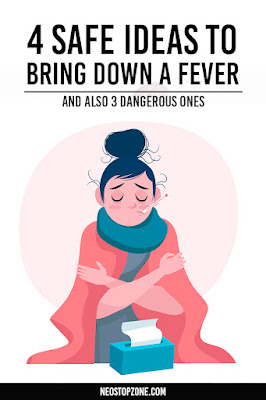Safe ways to treat fever
There are a lot of myths about fevers, how dangerous they are, and how to reduce them. Many people are surprised to learn that trying to bring down a fever is often not necessary. But if a fever is making you or your child uncomfortable, there are a few things you can do to bring it down safely—and a lot of things you shouldn’t.
What can you do
Fever often occurs when our body is trying to fight infection. The internal body temperature rises as a defense mechanism, trying to make the body warm enough so that invading germs cannot survive. As such, fever is a good thing.
Of course, they can also make us feel awful. When we have a fever we often feel achy and sad and want to be as comfortable as possible.
Children often deal with fever better than adults. If your child has a fever but is still playing and for the most part still acting like himself, nothing needs to be done to bring down his temperature.
Try to bring down the fever
A fever reducer such as Tylenol (acetaminophen) or Advil or Motrin (ibuprofen) is one of the simplest and most effective ways to bring down a fever. These medicines work relatively quickly and can make you feel better for four to eight hours.
Acetaminophen can be used in babies under 2 months of age. However, if your baby is younger than 3 months and has a fever, consult your pediatrician before giving any medicine.
Ibuprofen can be used in children under 6 months of age. Aspirin should not be given to children but can be used in adults over 18 years of age
Drink more Fluids
It is really important to stay hydrated all the time but even more so when you have a fever. Higher body temperature can lead to more rapid dehydration. Drinking cold liquids can make you less likely to become dehydrated and may even help cool your body.
Bath
Taking a bath can bring down your fever, but the really important part is that it can’t be a cold shower. While it may seem like it will help more than taking a hot bath, going cold or ice water will cause shivering that can actually raise your internal temperature.
Going into a bath that is comfortable for you in temperature will help you relax and may even reduce the fever.
Cool pack under the arms
A commonly used first aid technique to reduce high temperatures or hyperthermia is to apply cold packs under the arms and to the groin area. It is often used in cases where a person is overheated due to external factors (such as exercising or being outside in high heat for long periods of time), but it can also help if the fever is high.
It is important to know that the fever may return after the cold pack is removed. You also shouldn’t be using ice packs – cool washcloths are enough.
What you Shouldn’t
Unfortunately, many people are afraid of fevers and can make dangerous mistakes in trying to bring down the temperature. These are the things you should never do to try to bring down a fever.
Do not rub with alcohol
This old fever reducer is a really bad idea. If someone advises you to use rubbing alcohol on yourself or your child to bring down the temperature, please do not do so. Not only is it ineffective, but it can also cause alcohol poisoning.
Don’t go in an Ice bath
As discussed above, bathing is fine as long as it is warm. Taking an ice bath may lower your body temperature temporarily (very) but it will quickly cause shivering, which actually raises your core temperature.
Don’t Double Up on Medications
Taking more antipyretic drugs or taking two different types of medicines together is not only effective but also dangerous. It can damage your organs and will not bring down your temperature fast enough. Tylenol (acetaminophen) overdose is a common reason children are seen in the emergency room.
Healthcare providers recommend:
- Do not alternate fever-reducing drugs.
- Write down the last time you gave the medicine.
- Communicate with other caregivers so as not to inadvertently give extra medication.
- Keep all medicines out of the reach of children.
When to See a Doctor
Obviously, people are often concerned about fever. And there are times when you should see a doctor for a fever, but this is very rare because of the number on the thermometer.
The exception to this rule is fever in young infants:
- Any baby that is younger than 3 months old with a temperature higher than 100.4 degrees Fahrenheit should be evaluated by a healthcare provider (preferably a pediatrician).
- Babies 3 to 6 months old with a temperature higher than 102.2 degrees Fahrenheit should see their doctor.
It’s not because a fever is going to hurt them, but babies can have very serious illnesses that cause fever and may need special tests to make sure they’re treated properly.
If you check your temperature or your child’s If you’re concerned about a temperature, it’s always best to contact your healthcare provider to discuss symptoms and get a recommended for treatment.

